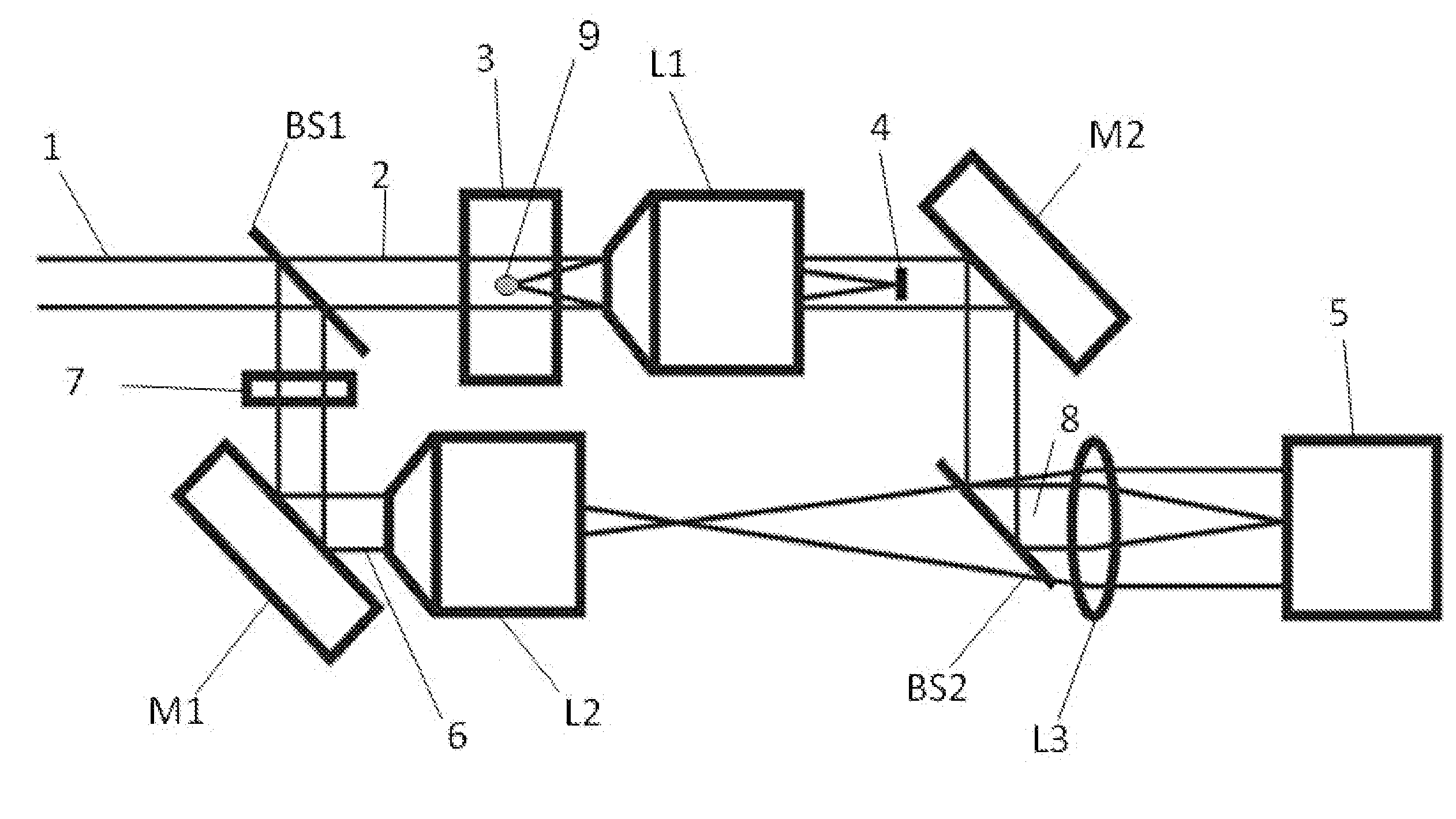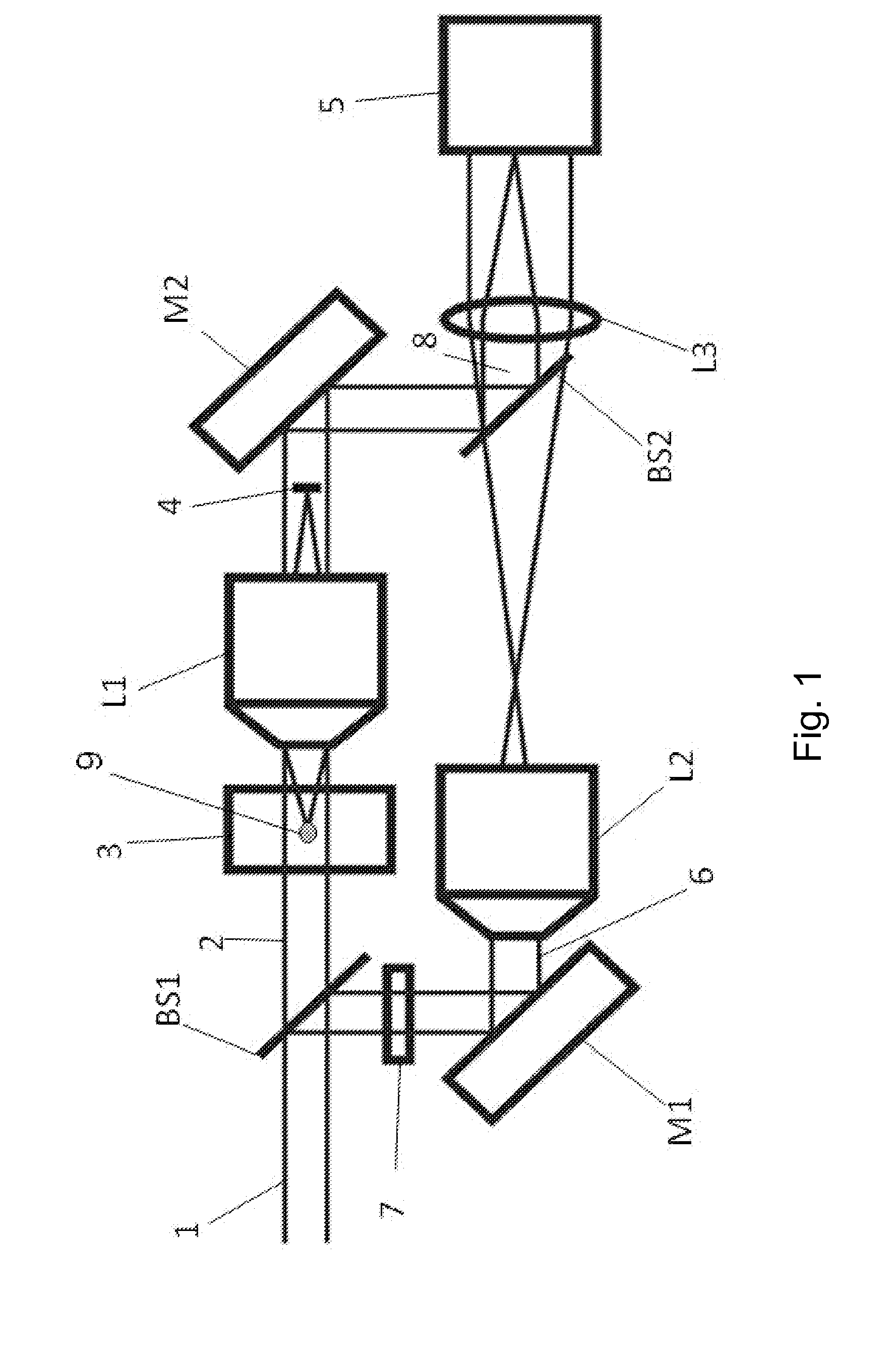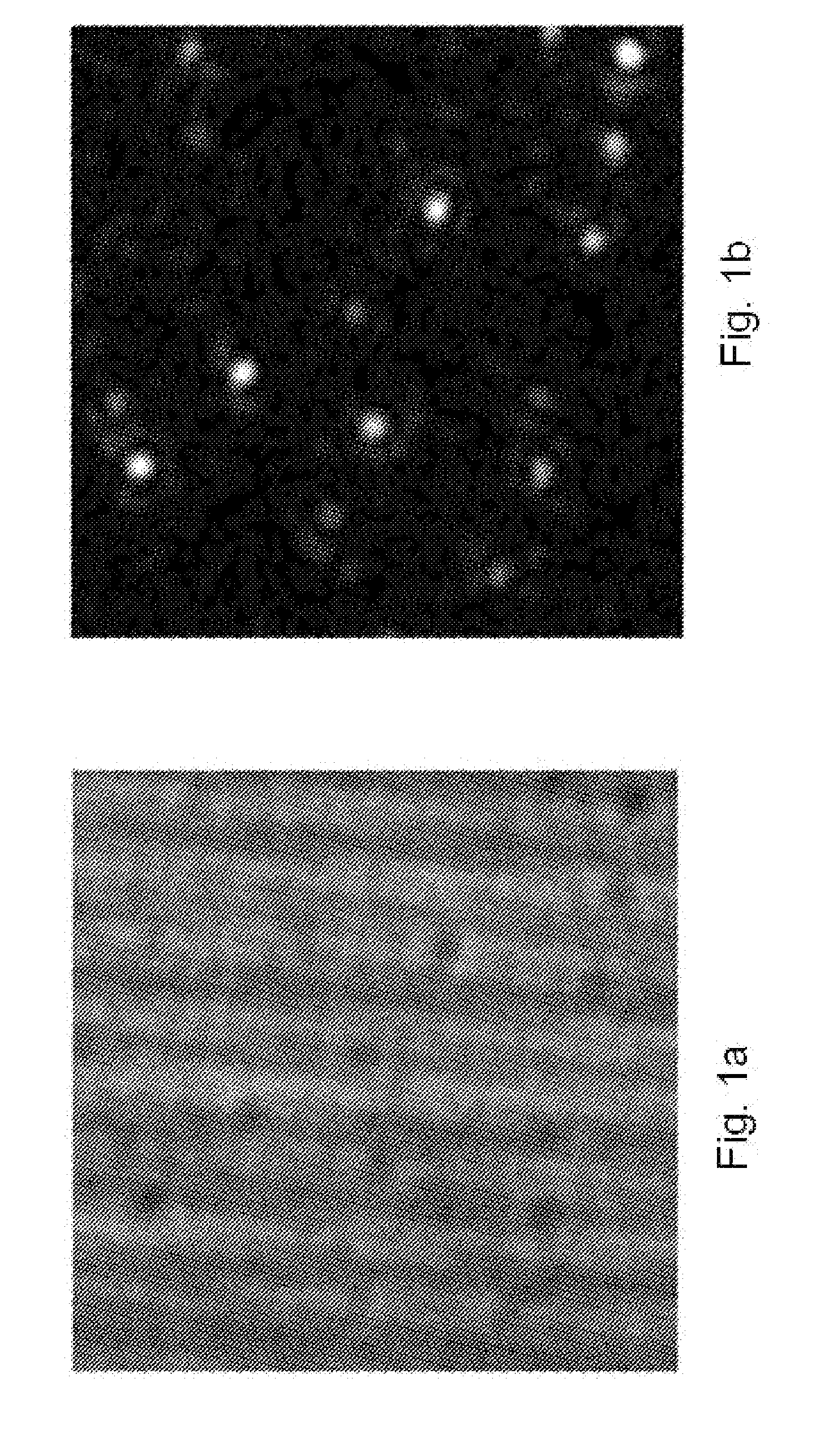Holographic microscopy and method to investigate nano-sized objects
a nano-sized object and microscope technology, applied in the field of holographic microscope and a method to investigate nano-sized objects, can solve the problems of difficult to achieve, unrealistic use of high numerical aperture lenses,
- Summary
- Abstract
- Description
- Claims
- Application Information
AI Technical Summary
Benefits of technology
Problems solved by technology
Method used
Image
Examples
example
[0079]To demonstrate the feasibility of the dark field DHM to detect in 3D particles smaller than the resolution limit, we inserted nanometric particles immersed in deionised distilled water between a microscopic slide and a cover-slit. The particles have an average size of 150 nm with a width of 20 nm. The DHM is equipped with ×10 microscope lenses (NA=0.3) that provide a resolution limit of 1.3 μm.
[0080]The original field of view is 525 μm×420 μm that is imaged on a CCD sensor of 1280×1024 pixels. We note that the size peak of the particles is 8 times smaller than the resolution limit. The particle intensity images were recorded focus in bright and dark field (FIGS. 1a, b). The hologram was recorded in dark field with a defocus distance of 60 μm and reconstructed over this distance. Its intensity image is provided by FIG. 1c. FIG. 1d shows the intensity of the refocused image by digital holography.
[0081]We observe, as expected that a large part of the particles in the FIG. 1a have...
PUM
 Login to View More
Login to View More Abstract
Description
Claims
Application Information
 Login to View More
Login to View More - R&D
- Intellectual Property
- Life Sciences
- Materials
- Tech Scout
- Unparalleled Data Quality
- Higher Quality Content
- 60% Fewer Hallucinations
Browse by: Latest US Patents, China's latest patents, Technical Efficacy Thesaurus, Application Domain, Technology Topic, Popular Technical Reports.
© 2025 PatSnap. All rights reserved.Legal|Privacy policy|Modern Slavery Act Transparency Statement|Sitemap|About US| Contact US: help@patsnap.com



